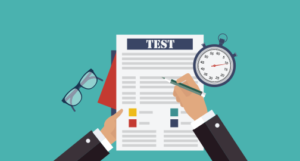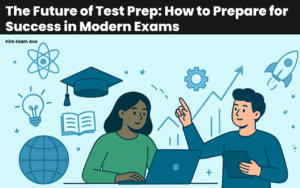Inspiring Statistics Project Ideas for Modern Students
A statistics project is a research-based investigation that allows students to apply mathematical and analytical skills to real-world difficulties. It contains meeting, establishing, and interpretation data to expose designs, relationships, and understandings. Such projects not only strengthen students’ consideration of statistical procedures but also progress their decision-making and problem-solving capabilities. Many students who search for academic backing to pay someone to take my HESI exam also have the advantage of understanding data-driven research, as it sharpens analytical thoughts across several subjects.
What Is a Statistics Project?
A statistics project is a duty that includes answering an exact research question using statistical practices and offering the findings in a written report. These projects help students build skills in data reading ability, analytical reasoning, and decision-making. In school, such projects often include establishing a hypothesis, conducting inspections or experimentations, and evaluating data using tools like Excel, SPSS, or R. Many students who juggle multiple tasks often search for proficient academic support, similar to when they look to pay someone to take my TOEFL exam for expert support.
Stats projects promote thinking by integrating concepts with hands-on practice. They are critical to our understanding of how data shapes policy, economic trends and technological innovation. By completing a good project, students can learn principles of statistics as well as patterns present in society, industry or research.
How to Choose the Best Statistics Project Topic
The subject is the core of every project. A respectable topic should be contextually related, researchable, and data-driven. The problem that scholars select should be something for which data sources are manageable or can be discovered through investigations or research. If students find topic selection or project analysis challenging, they can pay someone to take my online exam or get expert academic assistance to better understand data interpretation and research methodologies effectively.
To identify a suitable topic:
- Define your goal: Which problem or question are you trying to solve?
- Verify data accessibility: Credible datasets are or can be easily available.
- Choose the appropriate method: Choose descriptive or inferential stats according to your purpose.
- Closely related to your interest: When a researcher is interested in the topic of his project, projects seem more exciting and successful.
- Act ethically in the context of data: Avoid sensitive or personal topics.
It’s a smart collaboration of curiosity and methodologically rigorous techniques, yielding informative–yet academically defensible–results.
100+ Statistics Project Ideas Categorized by Subject
Below are categorized statistics project ideas suitable for high school, college, or university students. Each section focuses on a specific area of study, providing both conceptual direction and practical research possibilities. Students exploring professional certifications or wondering if they should hire someone to take my PMP exam can also use these project ideas to strengthen their analytical and problem-solving skills, which are essential for success in both academic and professional assessments.
1. Social Issues
- Urban vs. rural income inequality and education availability.
- Relation of unemployment rates and levels of crime.
- Gender -differential leadership role analysis.
- Public attitudes toward climate change policies.
- Analyzing correlations between literacy rates and poverty.
- Link between expensive housing and homelessness.
- Effect of social media activism on policy changes.
- How turnout among the young and educated is changing.
- Empirical regularity in migration and population density.
- Psychosocial factors of RES participation.
- Connections of cultural diversity to community development.
- Analysis of Marriage and Divorce Rates Among Regions.
2. Health and Public Health
- Statistical trends in childhood obesity: decade in review.
- Relationship between percentage vaccination and outbreak of the disease.
- Trends in the psychological health of college students.
- Physical activity and the battle against stress.
- Association between air pollution and rates of respiratory illness.
- Diet and the prevalence of coronary heart disease.
- Income–access to care relation at the statistical level.
- Study of sleeping habits of the students during examinations.
- The relationship of screen time to eye strain.
- Research on smoking patterns by various ages.
- Polling on opinion of how satisfied people are with their health insurance.
- Cross-national comparison of life expectancy.
3. Business and Finance
- Ads Budget and Sales progressive correlation.
- A study of consumers in a recession.
- Forecasting the Volatility of the Stock Market Using Historical Data.
- Employee satisfaction and associate company profitability.
- Sectoral trends in survival rates of small businesses.
- Interest rates and real estate investment.
- Data analysis in e-commerce structure of customer loyalty.
- Brand reputation and its impact on sales growth.
- Online Versus In-store Shopping A comparative analysis between online and in store shopping behavior.
- impact of inflation on the purchasing power.
- Predicting corporate earnings with regression models.
- Analysis of cryptocurrency adoption trends.
4. Technology and Digital Trends
- Use of the internet and productivity.
- Statistical study of sectorized cybersecurity incidents.
- Correlation between attention span and use of social media.
- Online learning platforms’ growth stats after pandemic.
- What will happen to jobs if AI is adopted.
- Analysis of dependence on smartphones among teenagers.
- Research on digital literacy and sociodemographic differences.
- Relationship between Internet gaming disorder and academic motivation in adolescents.
- Technology in education spending analysis.
- Association of screen time with sleep quality.
- Trends in wearable technology adoption.
- What you can learn from a statistical look at data breaches over the last 5 years.
5. Education and Academic Performance
- Correlation among study time and achievement.
- Effects of internet-based learning on student learning.
- Effect of class size on student achievement.
- Relationship between attendance and grade in a test.
- Effects of parental education on child academic achievement.
- Link between funding and performance Relationship between school expenditure and student outcomes.
- Analysis of standardized testing effectiveness.
- Analyses of student motivation across subjects.
- Correlation between extracurricular activities and GPA.
- Sex-based patterns of success in science and mathematics.
- Statistics analysis of digital media in education.
- Peer influence on academic behavior.
6. Sports and Entertainment
- Correlation of number of hours trained to athletic performance.
- Analysis of injury rates in professional sports.
- Changes in viewership patterns for major sports.
- Association between team budget and performance.
- Streaming platform viewing habit of audiences.
- Gender pay gap in sports study.
- The effects of crowd attendance on performance in sport.
- The correlation between sports participation and academic achievement.
- Age streaming music Music listening statistics by age.
- Relationship of film ratings with shopping.
- Effect of social media on celebrity fan following.
- Trends in global exports participation.
7. Environment and Sustainability
- Breaking down carbon emissions by source.
- The correlation between rates of deforestation and urbanization.
- Trends in renewable energy adoption.
- Study of plastic waste generation.
- Statistics assessment of water pollution.
- Influence of climate change on agricultural production.
- Recycling with education levels as a correlate.
- Analysis of trends toward increased global temperatures.
- Link between biodiversity and population density.
- Energy consumption patterns in households.
- Public attitudes toward eco-friendly products.
- The statistical effects of deforestation on the loss of wildlife.
8. Economics
- GDP growth and the rates of employment.
- The direction of inflation and purchasing power.
- A cross-regional analysis of income inequality.
- Association between trade policies and rates of exports.
- Earning potential and education level.
- Statistical investigation of world oil prices.
- The association of taxation with business development.
- Research related to fluctuations in exchange rates.
- Comparative study of emerging vs. advanced markets.
- The debt-growth connection.
- The economic effects of tourism in small countries.
- Statistical forecast of inflation trends.
9. Environmental Science
- Study of the variation over time of the air quality index.
- Association of rain patterns with crop productivity.
- Natural disaster frequency and strength analysis.
- A statistical analysis of renewable power generation.
- Effect of pollution on the population of marine organisms.
- Temperature and sea level rise is analyzed.
- Human Role and Interaction Ozone Depletion.
- Analysis of water scarcity on a regional level.
- Trends in global warming indicators.
- Association between industrialization and carbon footprint.
- Study on soil fertility and agricultural productivity.
- Effects on balance of ecosystems by urban design.
10. Psychology
- Association between stress and academic performance in Statistics students.
- Research on the effects of social media on self-esteem.
- Relationship between sleep patterns and emotional well-being.
- Investigation on procrastination in students.
- Relation between motivation and goal attainment.
- Status of family structure in adolescent behavior.
- Epidemiologic analysis of prevalence of anxiety among adolescents.
- Concentration and Music.
- Correlation of personality and career decisions.
- Statistical patterns in decision-making behavior.
- Cognitive function related to digital addiction.
- Relationship between mindfulness and stress.
11. Sociology
- Link between education and social mobility.
- Media and attitudinal media use relationships.
- Generational Differences in Work Values: 27 Years of Perspective and Research.
- Analysis of social inequality trends.
- Correlation Patterns Between Religion and Politics.
- how gender roles and societal expectations have evolved through the years.
- Influence of Urbanization on Social Interactions.
- Information on youths’ involvement in community service.
- Relation between family dynamic and migration.
- Public attitudes toward gender equality.
- Social class and lifestyle preference research.
- Education’s relationship to civic involvement.
12. Marketing
- Correlation of product’s price and consumer behavior.
- Analysis of online advertising effectiveness.
- Relationship between participation in social media and brand awareness.
- Customer satisfaction analysis for digital marketing.
- Study on influencer marketing impact.
- Correlation between farrow-to-finish swine herd packaging design and sales.
- Seasonality in shopping behavior: The data speaks.
- Impacts of price promotion on customer loyalty.
- Trust in and purchase behavior toward brands: Trust building in the marketing-communications context.
- Statistical investigation of strategies for retaining customers.
- Relation between ad repetition and press exposure.
- Demographic market analysis and segmentation.
13. Other Interesting Project Ideas
- It’s nothing more than a study of statistics concerning the success rate of learning a language.
- Analysis of travel frequency post-pandemic.
- Relation between age and technology acceptance.
- Analysis of consumption behavior of university students.
- Analysis of pet ownership trends.
- Association of hobbies with stress.
- Impact of online retail on conventional stores.
- Data analysis of volunteerism trends.
- The popularity of an internet memo: statistical data.
- Reading habits and vocabulary development.
- Research on how generations adopt digital payments.
- Association between diet trends and cultural drivers.
Conclusion
Those statistics projects give you a sense of practice, taking students from theory to application. They encourage learners to examine trends in society, analyze human behavior, and draw insights from data. By using quantitative methods to tackle problems in education and technology, students enhance their analytical reasoning and problem-solving skills—abilities that are crucial in today’s data-driven world. And when deadlines feel overwhelming, some may even prefer to hire someone to take my proctor exam to manage their workload efficiently.
In health, economics and psychology, a good statistics project is set to produce or yield valid conclusions in experimental models providing better judgement.
Read More: 12 Ways Technology Negatively Impacts Education and Student Well-Being
Frequently Asked Questions
Why You Need A Statistics Projects Examples For Students And How To Find One
Project in statistics helps students to use and analyze data, conclude and write a plan based on their findings. They develop analytic thinking and the skills of research, as well as practical experience recording data, and using tools for handling data in academia or professional contexts.
How should I select the right topic for my statistics project?
Begin by picking a topic that you care about and one with available data. Ensure it’s relative, measurable and such that you can perform statistics on it.” Do not choose large topics—be specific about the variables you are interested in comparing, testing or measuring.
What are some statistics projects in areas that are common?
Common topics include education, business, health, environment, psychology, technology and social issues. There are data and statistical hypotheses to be found in every field.
What are some tools or software for a statistics project?
Services usually used are Microsoft Excel, SPSS, R, Python and Google Sheets or Minitab. These analyzers take care of data organization, graph plotting and statistical testing such as correlation, regression or hypothesis testing.
How do I get data for my statistics project?
You may gather the data by means of a survey, interviews or an experiment etc., you can collect original data through observations or experiments or from existing datasets also available from other reliable sources such as government reports, academic journals, public databases.
What are some steps to write a statistics project?
The important steps include choosing a topic, writing a hypothesis, conducting an experiment to gather data and information — or researching in order to do so, drawing conclusions based on your data analysis or research findings and communicating what you have learned effectively using charts, tables and graphs.
How do I display results for a statistics project?
Present findings using clear, easy to read graphics such as bar graphs, pie charts, scatter plots or tables. Tie these graphics to brief explanations, interpretations and a synthesis of what your data indicate about your hypothesis.
What is a good subject for a statistics project?
A great project has a purpose and written analysis from beginning to end. It should be well structured, adequately referenced and show an understanding of statistical ideas.
Can I use datasets found on the internet for my statistics project?
Yes, many students have made use of public data sets from reliable sources, such as the World Bank, WHO, U.S. Census Bureau or Kaggle. Make sure you are dealing with recent, accurate and relevant information.










